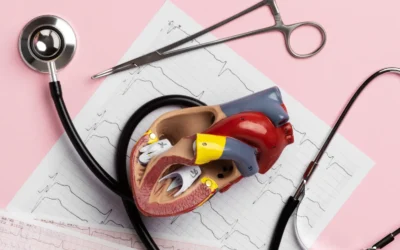In recent years, the use of whole body ultrasound has gained significant traction as a non-invasive imaging technique for comprehensive health assessments. As technology advances, medical professionals are increasingly utilizing full body ultrasound scans to detect potential health issues early on, offering a proactive approach to healthcare. This article explores the benefits, applications, and considerations of whole body imaging, particularly in the context of cancer detection, overall health monitoring, public safety, and corporate health screening.
Table of Contents
Understanding Whole Body Ultrasound
Whole body ultrasound, also known as full body ultrasound, is a diagnostic imaging technique that uses high-frequency sound waves to create images of the body’s internal structures. Unlike traditional imaging methods such as X-rays or CT scans, ultrasound does not involve radiation, making it a safer option for repeated use. This technique is particularly useful for visualizing soft tissues, organs, and blood flow.
Applications in Cancer Detection
One of the most promising applications of full body ultrasound is in the early detection of cancer. Cancer remains a leading cause of death worldwide, and early detection is crucial for improving survival rates. Whole body scans for cancer can identify tumors or abnormalities in various organs, allowing for timely intervention. While not a replacement for other diagnostic tools like MRI or CT scans, ultrasound can complement these methods by providing additional information and confirming findings.
Benefits of Whole Body Scans for Cancer:
- Non-invasive and Radiation-Free: Unlike other imaging techniques, ultrasound does not expose patients to harmful radiation, making it suitable for regular monitoring.
- Real-Time Imaging: Ultrasound provides real-time images, enabling healthcare providers to assess organ function and blood flow instantly.
- Cost-Effective: Generally, ultrasound is more affordable than other imaging modalities, potentially reducing healthcare costs for patients and providers.
Whole Body Imaging for General Health Monitoring
Beyond cancer detection, whole body imaging can be a valuable tool for general health assessments. Regular full body scans can help detect a range of conditions, from cardiovascular diseases to liver and kidney issues. By identifying potential health problems early, individuals can take preventive measures to maintain their well-being.
Key Advantages for Health Monitoring:
- Comprehensive Assessment: Whole body ultrasound offers a complete overview of the body’s internal state, helping to identify issues that may not yet present symptoms.
- Personalized Health Management: By understanding their unique health profile, individuals can make informed lifestyle and treatment choices.
- Early Intervention: Detecting health issues early can lead to more effective treatments and better outcomes.
The Importance of Whole Body Ultrasound in Public Safety and Corporate Health Screening
The utilization of whole body ultrasound has proven to be a game-changer in preventive healthcare, particularly within the realms of public safety and corporate health screening. By offering a non-invasive, radiation-free imaging option, whole body ultrasound is emerging as a vital tool in the early detection of asymptomatic pathologies among firefighters, police officers, and corporate employees.
Why Whole Body Ultrasound is Crucial for Public Safety Personnel
Firefighters and police officers are regularly exposed to hazardous conditions that significantly increase their risk for various health issues, including cardiovascular diseases and cancer. The high-stress nature of their work, combined with potential exposure to toxic substances, necessitates a proactive approach to health monitoring.
- Early Detection of Hidden Conditions: Whole body ultrasound can identify asymptomatic pathologies such as early-stage cancers, heart valve abnormalities, and other potentially life-threatening conditions. Detecting these issues before symptoms appear allows for timely intervention and potentially life-saving treatments.
- Onsite Availability: Mobile units can be deployed onsite at fire stations, police departments, or corporate offices, ensuring that screenings are accessible and convenient for all personnel. This reduces the need for time off work and enhances participation rates.
- Non-Invasive and Safe: The non-invasive, radiation-free nature of ultrasound makes it a safer option for frequent monitoring.
Whole Body Ultrasound in Corporate Health Screening
Corporate wellness programs are increasingly incorporating whole body ultrasound into their health screening offerings. Companies recognize the importance of maintaining a healthy workforce, not just for the well-being of employees, but also for productivity and reducing healthcare costs.
- Comprehensive Health Assessments: Whole body ultrasound provides a detailed overview of an employee’s internal health, identifying potential issues like fatty liver disease, kidney abnormalities, and cardiovascular risks.
- Cost-Effective and Efficient: By offering onsite screenings, companies can reduce the time employees spend away from work for medical appointments.
- Enhanced Employee Well-being: Providing comprehensive health screenings as part of a corporate wellness program demonstrates a company’s commitment to employee health.
Medicine 3.0: A New Paradigm in Healthcare
The concept of Medicine 3.0 represents a shift towards personalized and preventive healthcare, moving beyond the traditional reactive model. Whole body ultrasound fits perfectly into this paradigm by offering a proactive approach to health monitoring.
- Detection of Asymptomatic Pathologies: Whole body ultrasound excels at identifying conditions that may not yet present symptoms.
- Integration with Precision Medicine: The data obtained from whole body ultrasound can guide precision medicine strategies, enabling healthcare providers to tailor treatments based on the specific needs of each patient.
Onsite Screenings: Bringing Preventive Health to the Workforce
The ability to bring whole body ultrasound directly to public safety departments and corporate offices is a significant advancement in preventive healthcare.
- Convenience: Employees and public safety personnel can undergo screenings without needing to visit a hospital or clinic.
- Increased Participation: Onsite services encourage higher participation rates, ensuring that more individuals benefit from early detection and preventive care.
- Tailored Health Programs: Organizations can develop health programs tailored to the specific needs of their workforce.
Conclusion
Whole body ultrasound is transforming the way preventive healthcare is delivered to public safety personnel and corporate employees. By offering a non-invasive, radiation-free, and onsite screening option, this technology is not only detecting asymptomatic pathologies but also enhancing the overall health and well-being of those who protect our communities and drive our economy. As part of the Medicine 3.0 movement, whole body ultrasound is a complementary tool that works alongside traditional medical care to provide a comprehensive, proactive approach to health management. By detecting issues early and enabling precision medicine, whole body ultrasound is playing a crucial role in advancing the future of healthcare.





0 Comments